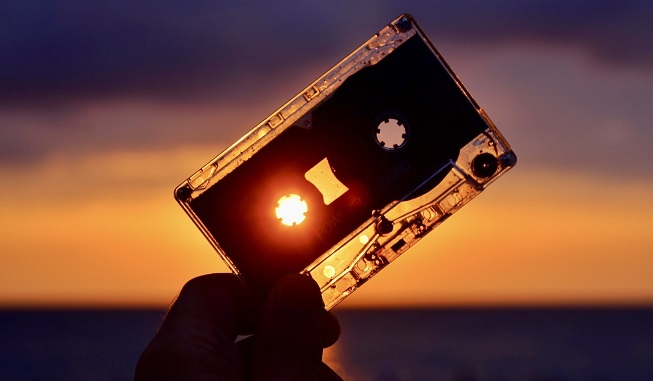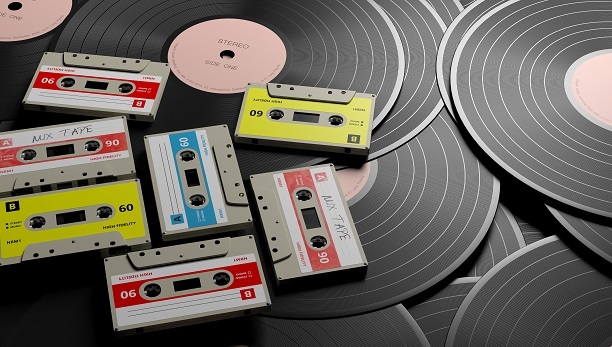
 Data Structure
Data Structure Networking
Networking RDBMS
RDBMS Operating System
Operating System Java
Java MS Excel
MS Excel iOS
iOS HTML
HTML CSS
CSS Android
Android Python
Python C Programming
C Programming C++
C++ C#
C# MongoDB
MongoDB MySQL
MySQL Javascript
Javascript PHP
PHP
- Selected Reading
- UPSC IAS Exams Notes
- Developer's Best Practices
- Questions and Answers
- Effective Resume Writing
- HR Interview Questions
- Computer Glossary
- Who is Who
What is the full form of DAT ?
Introduction to Digital Audio Tape (DAT)
Digital Audio Tape (DAT) is a professional digital recording format that was introduced in the late 1980s. It uses attractive tape to store high-quality Digital Audio Recordings, making it a well-known choice for professional audio recording, mastering, and documenting.

DAT provided superior sound quality compared to analog recording designs, and its compact size and transportability made it a popular choice among musicians, recording studios, and broadcasters. Whereas its popularity has declined with the rise of digital audio technologies, DAT remains an important part of audio history and is still utilised in a few professional settings.
Technical Specifications of DAT
Here are some technical specifications of Digital Audio Tape (DAT) ?
DAT uses a rotating head helical scan recording strategy, where the tape is wrapped around a spinning drum head and recorded in diagonal tracks over the tape.
DAT includes a sampling frequency of 48 kHz and a test resolution of 16 bits, providing a frequency reaction of 20 Hz to 20 kHz and a dynamic range of around 93 dB.
DAT tapes come in two sizes: the standard size of 4 mm wide and 60 m long, and the long-play measure of 4 mm wide and 120 m long.
The standard DAT tape can hold up to 120 minutes of stereo audio, whereas the long-play DAT tape can hold up to 240 minutes of stereo audio.
DAT machines utilise a digital error adjustment system called Cross Interleave Reed-Solomon Code (CIRC) to ensure accurate information storage and recovery.
DAT tapes use a helical-scan metal particle tape formulation that gives high-density recording and low error rates.
Advantages and Disadvantages of DAT
Advantages of DAT
High-quality digital recording ? DAT offers high-quality digital recording, with an analysing frequency of 48 kHz and a sample decision of 16 bits, resulting in advanced sound high-quality as compared to analog designs.
Compact and portable ? DAT tapes are popular among performers, audio recording studios, and radios due to their mobility and compact size.
Error correction ? DAT uses a digital error correction device referred to as CIRC, which makes a difference to ensure accurate information storage and restoration.
Long-term storage ? DAT tapes have a long shelf life and may store digital audio recordings for numerous years without significant degradation.
Disadvantages of DAT
Limited storage capacity ? DAT tapes have limited storage ability, with a maximum recording time of 120 minutes for popular tapes and 240 minutes for long-play tapes.
Fragile tapes ? DAT tapes are inclined to damage if mishandled, and even small stretches or twists can result in data loss or playback errors.
Playback compatibility issues ? Due to the decrease in popularity of DAT, it could be hard to find a playback system, and compatibility problems can also rise up when attempting to play DAT tapes on numerous machines.
Applications of Digital Audio Tape
There are several applications for Digital Audio Tapes (DAT), including ?
Expert audio record ? DAT is frequently used for expert audio recording, research, and preservation because of its outstanding digital recording abilities.

Broadcasting ? Due to its advanced sound reliability and quality, DAT turned into used for on-air playback in both tv and radio transmission.
Music production ? DAT became a famous recording format for performers and composers because it produced digital audio recordings of the best quality.
Sound design ? Due to its capability to record high-quality audio, DAT was used in the audio production of television shows, movies, and video games with audio.
Field recording ? DAT was a famous preference for documentary filmmakers and audio recordists due to its small size and accessibility, which made it best for field recording.
Audio restoration ? In order to file and conserve old analog audio recordings for future generations, DAT was used in audio recovery tasks.
Conclusion
In conclusion, Digital Audio Tape (DAT) was a professional digital recording format that provided reliable, transportable, high-quality digital recording capabilities. professional audio recording, tv broadcasting, music production, sound design, field recording, and audio recovery tasks are frequently used. DAT has lost a number of its popularity as digital audio technologies have won popularity, however it still has an important function in audio records and helped set up the current audio industry.
FAQs
Q1. What is DAT different from other digital audio formats?
Ans. Other digital audio formats, such CD and MP3, can examine and write digital audio information using a laser or a computerised technique, while DAT used a rotary head helical experiment archiving method
Q2. Is DAT still used nowadays?
Ans. DAT is still used in a few professional situations for archiving and restoration tasks, however the fact that its use has decreased in popularity because of the rise of digital audio technologies.
Q3. Can DAT tapes be transformed to digital formats?
Ans. Yes, DAT tapes may be transformed using a specialised device or through sending them to a well known audio digitization carrier.

